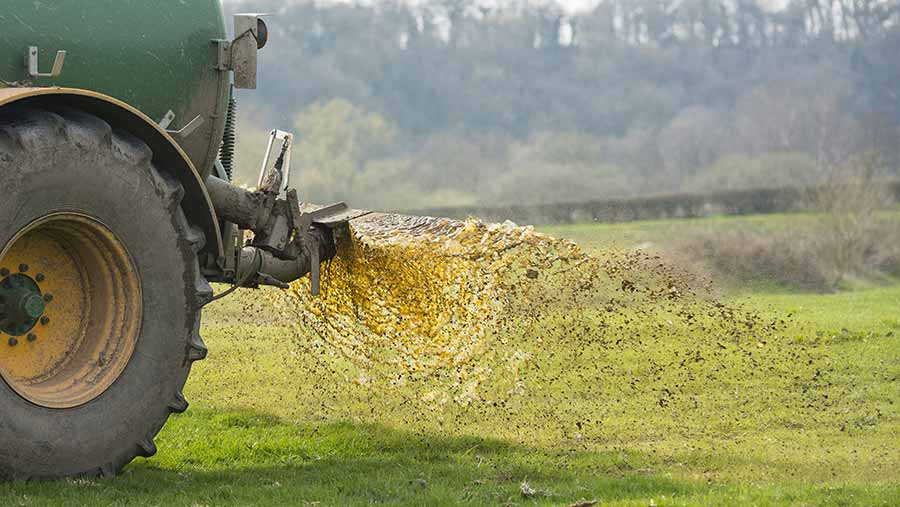How to analyse your slurry nutrient content
 © John Eveson/REX/Shutterstock
© John Eveson/REX/Shutterstock As the NVZ closed period for applying organic manure draws to a close (on 31 January), dairy farmers are being urged to check their samples before spreading.
This will ensure crops are provided with the correct level of fertiliser, after a study revealed a wide variation in slurry nutrient content.
More than 1,500 slurry samples taken between 2006 and 2015 found dairy slurry was not delivering the balance of nutrients expected, when compared to recommended figures in Defra’s RB209 fertiliser manual.
See also: Health and safety advice when taking slurry samples
How to sample your slurry and solid manure
- Take a number of samples from a range of positions
- Mix them together, then take another sub-sample
- Send the sample away immediately for testing or test straightaway with slurry N meter or slurry hydrometer on farm
- Take at least five sub-samples of two litres
- Mix together in a large container and pour a two-litre sample immediately into a smaller, clean container
- The sample should be analysed for dry matter, total nitrogen, ammonium-N, phosphorus, potassium, sulphur and magnesium
- On-farm analysis should be done immediately after sampling, making sure the sample taken is well mixed
- Samples for laboratory analysis should be packaged in clean screw-top two-litre plastic containers, leaving at least 5cm of airspace to allow it to be shaken in the lab
- With manures, use 500-gauge polythene bags and expel excess air from the bag before sealing
- Clearly label the samples on the outside of the container or bag and dispatch them immediately or within a maximum of seven days if kept in a refrigerator.
Giles Dadd, technical director for SlurryWise, which conducted the study along with Lancrop Laboratories, says slurry nutrient content varies widely, mainly through water dilution, which will be a big problem for many producers after unprecedented levels of rain.
“This can be because of large areas of unroofed concrete or gutter water going into the tank or lagoon,” says Mr Dadd.
Diet variations
Variations in diet – especially the ratio of grass or forage to concentrates – can also affect nutrient concentration.
“Forages will have a low phosphate/high potash content, whereas cereal-based concentrates are higher in phosphate than potash,” he says.
Mr Dadd believes higher levels of slurry nitrogen may be caused by feeding types of proteins the cow does not need or use. Whereas high phosphate levels in slurry could originate from overfeeding phosphate minerals unnecessarily.
And the opposite is believed to be true for those slurries that are below levels given in the RB209 guide.
Results from the study found:
- 2% of the samples were within 5% of the RB209 recommendations for nitrogen
- 4% were within 5% of the RB209 recommendations for phosphate
- 4% were within 5% of the RB209 recommendations for potash
- 48% of slurry applications had less than the recommended amount of nitrogen
- 81% had less than the recommended levels of phosphate
- 86% had less than the recommended levels of potash.
This lack of information on slurry nutrient content can lead to incorrect fertilisation of crops, especially if the soil has not been analysed for its contribution to the nutrients available, Mr Dadd warns.
“Our advice is to find out exactly what is in your slurry and calculate how much the soil will contribute and thus how much bagged fertiliser is needed to produce the crop.”
